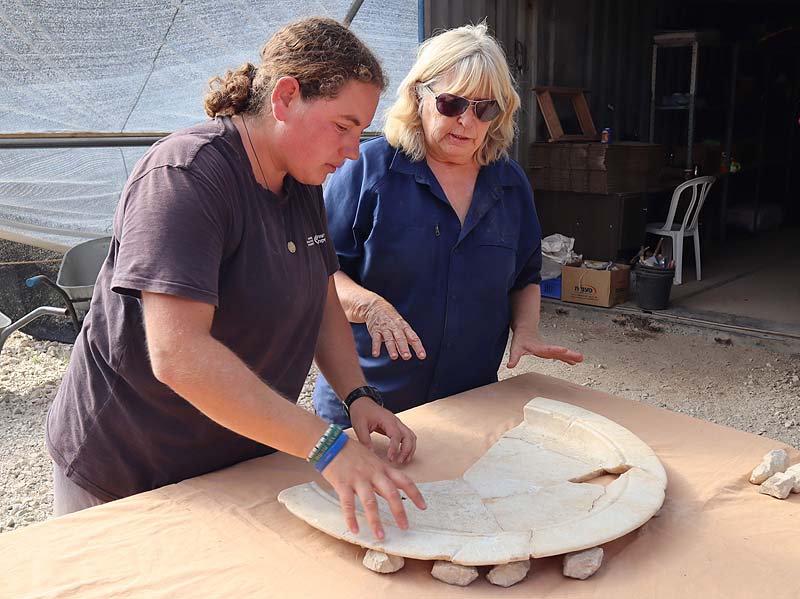Photo Credit: Anat Rasiuk, Israel Antiquities Authority.

Vats used to produce fish sauce (garum) which were rare in the eastern Mediterranean, were recently uncovered in Ashkelon by the Israel Antiquities Authority. The excavation has revealed evidence of 2000-year old Roman and Byzantine culinary preferences.

Youths from the nearby Kibbutz Yad Mordecai and students from the Makif Vav middle school located next to the project, participated in the excavation, which was underwritten by the Ashkelon Municipality and the Ashkelon Economic Co., in preparation for creating the southern shore city’s Eco-Sport Park.

‘);
_avp.push({ tagid: article_top_ad_tagid, alias: ‘/’, type: ‘banner’, zid: ThisAdID, pid: 16, onscroll: 0 });
According to Dr. Tali Erickson-Gini from the IAA, “long before pasta and pizza, the ancient Roman diet was based largely on fish sauce. Historical sources refer to the production of special fish sauce, that was used as a basic condiment for food in the Roman and Byzantine eras throughout the Mediterranean basin. They report that the accompanying strong odors during its production required locating it far from urban areas, in our case approximately 2 kilometers from ancient Ashkelon.”

Dr. Erickson-Gini added: “This is a rare find in our region, and very few installations of this kind have been found in the eastern Mediterranean. Ancient sources even refer to the production of Jewish garum (the Talmud mentions it as Oksigron). The discovery of this kind of installation in Ashkelon proves that the Roman tastes that spread throughout the empire were not confined to dress but also included dietary habits.”

The Roman site was eventually abandoned but the conditions that favored viticulture remained and in the Byzantine period in the 5th century CE, a monastic community began to thrive there, making a living from wine production: three winepresses were built next to an elaborately decorated church.
Little of the church has survived, but architectural fragments found at the site show that it was decorated with impressive marble and mosaics. A large kiln complex was located nearby that produced wine jars. These appear to have been used for exporting wine, which was the primary source of income for the monastery.

Dr Erickson-Gini said: “The site, which served as an industrial area over several periods, was again abandoned sometime after the Islamic conquest of the region in 7th century CE, and later nomadic families, probably residing in tents, dismantled the structures and sold the different parts for building material elsewhere.”
Evidence of this activity was found in the vats of the winepresses, which were turned into refuse pits containing the bones of large pack animals, such as donkeys and camels.

Ashkelon mayor Tomer Glam said, “Ashkelon is one of the most ancient cities in the world, and from time to time we find additional proof of that. The recent excavation in one of its beautiful new neighborhoods produces a combination of the city’s rich past, its present development and its future progress.
On Dec. 22, 2019, the first day of Chanukah, the IAA will open the site to public viewing free of charge, from 12:30 to 4:30 PM. The site is located on the opposite side of the Makif Vav middle school, Ashkelon.
‘);
_avp.push({ tagid: article_top_ad_tagid, alias: ‘/’, type: ‘banner’, zid: ThisAdID, pid: 16, onscroll: 10 });



